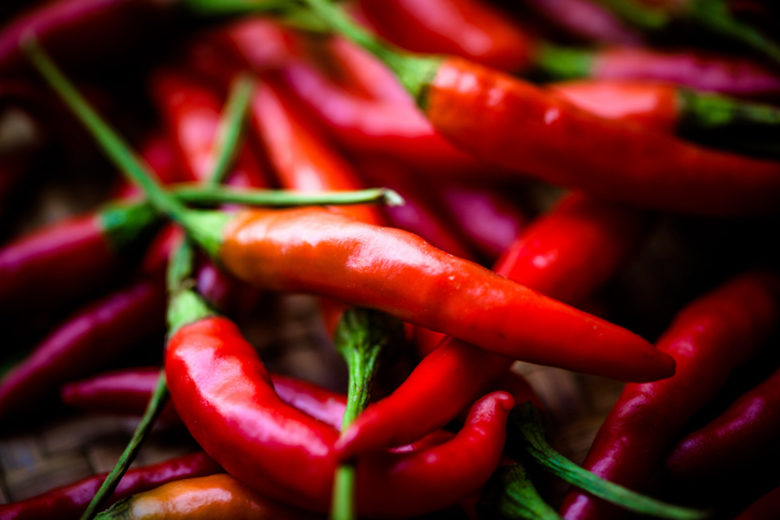
Love it or hate it, spicy food is trending in 2015. “Spice” does not have to equal spicy and when used correctly, can enhance the natural flavors of food without burning your mouth. Chili peppers are the most common food associated with spice and are rated on the Scoville scale which measures capsaicin content.
Capsaicin is the part of a chili that makes it taste hot and while a deterrent to animals and insects, some humans love the flavor. Studies have linked a love of spicy foods to both liking roller coasters and adventure-seeking personalities, and that seems to make sense; ingesting capsaicin creates a rush of endorphins that can make eating exciting.
These heat-creating capsaicinoid compounds have been linked to many health benefits including cardiovascular, dermatologic, anti-cancer and pain blocking. There are culinary ways to both enhance and mute spiciness of a pepper and choosing the right type is the first step. Follow the tips below and include mild to spicy ingredients in your cooking today.
How to Enhance a Spice
- Crushed or ground spice has a more potent flavor than using the whole food.
- Adding spices towards the end of the cooking process allows the flavors to pop more instead of blending into the dish.
- Fresh chilies or other spicy vegetables often have a stronger taste than dried.
- Add more quantity of any spice to increase the flavor if you like heat.
- Include the lighter inner membrane of the chili, which is the hottest part.
How to Mute a Spice
- Cooking or steaming spices and herbs can decrease their flavor.
- Use dried chilies during the cooking process so they can infuse flavor into the dish in a more subtle way.
- Mute spiciness with ingredients like extra broth, rice or dairy foods.
- Stir in some tahini, almond butter or peanut butter. Fat reduces or delays spiciness as it coats capsaicin molecules.
- Remove the seeds and white inner layer of membrane when you cut your chili.
- If the dish is acidic or tomato-based, add some sugar or honey to balance flavors. Hot sauces with sweet fruit bases can often balance a hot flavor.
Pick Your Pepper
Mild
- Anaheim pepper
- Ancho pepper
- Sweet bell pepper
- Pimento
- Pepperocini pepper
- Poblano pepper
- Sriracha sauce
Medium
- Horseradish and wasabi
- Jalapeño and chipotle peppers
- Serrano pepper
- Tabasco sauce
- Tabasco pepper
Hot
- Carolina Reaper pepper
- Cayenne pepper or powder
- Ghost pepper (or bhut jolokia)
- Habanero
- Infinity chili
- Thai chili pepper





